Hiking Mt. Baldy is a SoCal rite of passage — but can it be done safely in the snow?
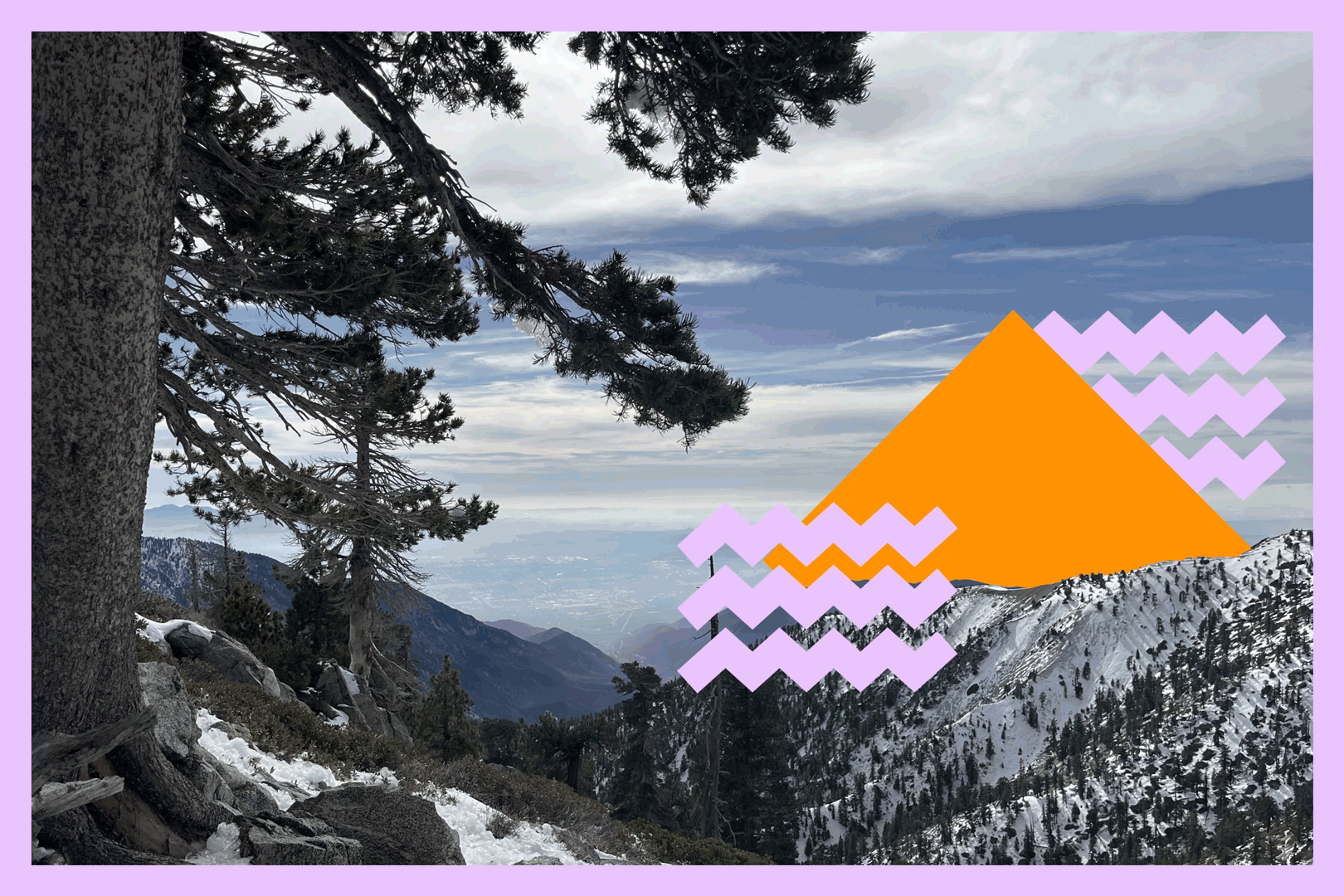
- Share via
It was all smiles and selfies on the summit of Mt. Baldy on Christmas Day. Crystalline snow underfoot and blue skies overhead. A cheerful hiker clutching a Santa hat. Yet, as I shared the triumphant moment with a handful of adventurers, a darker scene was unfolding just a few feet away.
As I made my way down past frosted trees, still riding a euphoric high from the accomplishment, I stopped for a moment to peel off a jacket. A young man who seemed glued to my back halted. I waited for him to pass, but he didn’t. Suspicion confirmed: “He’s following me,” I thought to myself.
My hiking shadow wore Nike tennis shoes, a concerning footwear choice for descending steep icy switchbacks. He slipped at least a dozen times before I turned back to ask him if he was OK.
You are reading The Wild newsletter
Sign up to get expert tips on the best of Southern California's beaches, trails, parks, deserts, forests and mountains in your inbox every Thursday
You may occasionally receive promotional content from the Los Angeles Times.
The young man, who I’ll call Unprepared, explained that this was his first time on the mountain and he had no idea that there would be snow. Shortly after starting his hike, around 9 a.m., he made a wrong turn and ended up approaching the summit from the Devil’s Backbone trail, notoriously dangerous for its steep dropoffs even in dry conditions.
“It was so scary,” Unprepared told me. “I was literally crawling.”
I later learned Unprepared had approached my partner on the mountaintop and asked for advice on how to descend. As the rest of the summiteers celebrated, he was anxiously calculating how to avoid bodily harm. And he was trailing us to make sure he didn’t get lost.

Rising 10,064 feet, Mt. Baldy — also known as Mt. San Antonio — is the highest point in Los Angeles County. It’s “basically L.A.’s Mt. Everest,” as my mountain-adoring partner put it.
Its alluring loft draws hikers of all stripes from the teeming megalopolis in its backyard. Some come prepared, while others impulsively follow the big mountain’s siren song. Baldy’s accessibility, coupled with the catch-all crowds, has earned it the reputation of a death trap.
Since 2020, at least seven people have died on the mountain, with more than 130 calls for rescues during the same period, according to the San Bernardino County Sheriff-Coroner Department. Scrutiny of the mountain intensified last year with the death and disappearance of several hikers on the heels of intense winter storms, including British actor Julian Sands. Sands’ remains were found in June, about five months after he went missing.
“Any mountain is risky in the wrong conditions,” said legendary mountaineer Rick Ridgeway, a good friend of Sands. While exactly what happened to Sands is a mystery; “he clearly shouldn’t have been up there in the face of the storm” said Ridgeway, who has topped out on Everest and K2, among many other sky-kissing peaks. (Stay tuned for more on my conversation with Ridgeway in an upcoming newsletter.)
Just before Christmas, the first consequential storm of the season turned the upper mountain into a winter wonderland. More powder arrived this year, including over the weekend. While beautiful to behold, the snow and ice represent a return to conditions that require experience and technical equipment that the casual hiker may not have. So far, the precipitation pales in comparison to what the mountain saw last year, but there’s no telling what will be dumped on top of it in the coming weeks.

Cautionary signs greet visitors in the parking area. “WARNING: EXTREME DANGER,” proclaims a sign tacked up under the entrance marker for the Baldy Bowl trail, the most frequented route to the top. A highlighter-yellow sign posted a short way up the trail advises trail patrons that they need mountaineering boots, crampons, ice ax and helmet.
“You are responsible for your own safety,” said Dana Dierkes, spokesperson for the Angeles National Forest. “It’s really important to keep not just yourself but also your potential rescuers out of danger, by not taking unnecessary risks.”
I’ve thought a lot about risk tolerance since I dramatically upped my hiking game starting in mid-2020. (In fact, I trace my fitness turning point to my first ascent of Mt. Baldy in January of 2021.) Writing this newsletter has made risk considerations even more salient as I try to encourage responsible outdoor adventuring. In unpredictable nature, risks can’t be entirely avoided, but they can be mitigated with planning, experience and the right gear.
Since my first tango with Baldy, I’ve learned so much and covered so many more miles, including icy ones. This time around, with far superior footwear and more hospitable weather, it was less struggle and more pleasure. But I continue to wear my humility in the face of fickle nature on my insulated jacket sleeve.
Many people, like Kevin Garcia, approach dangers inherent to the mountains with eyes wide open, finding nourishment in the payoff.
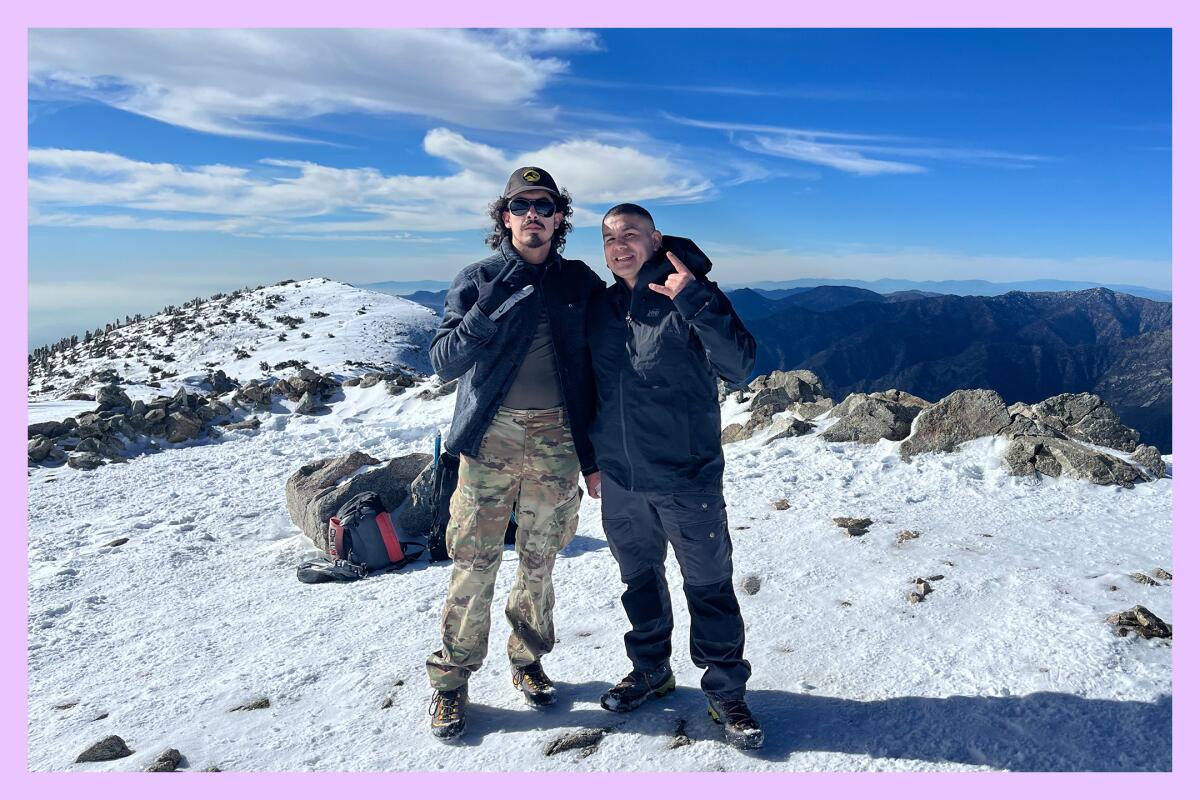
Garcia, 35, reached the summit shortly after me, marking his 18th time topping out on the behemoth.
Two of his friends sustained serious injuries last year after plummeting about 800 feet from the Baldy Bowl, a treacherous area. One cracked three ribs; the other broke both ankles, Garcia told me.
“Safety is a big deal,” he said, explaining that he had learned the ways of the mountains by immersing himself in a knowledgeable community — and through trial and error. (He’s since founded a hiking group, A Toda Madre Hikers.)
Garcia leaned hard into hiking in 2021 while going through a separation, then divorce. The outdoors continue to provide a salve.
He didn’t have his kids on Christmas Day so he decided to “spend time with our therapist — Mother Nature.”
If you feel similarly compelled to schedule a snow-kissed session with Mother Nature, here are some tips on how to be a responsible cold-weather hiker.
Before you go
- Read up on the weather, including expected temperature, precipitation and wind speed. Make sure to check the conditions at the bottom and the top of the mountain, which can differ significantly. Visit the National Weather Service at weather.gov to find forecasts for your specific location.
- Pack tire chains (and make sure you know how to use them).
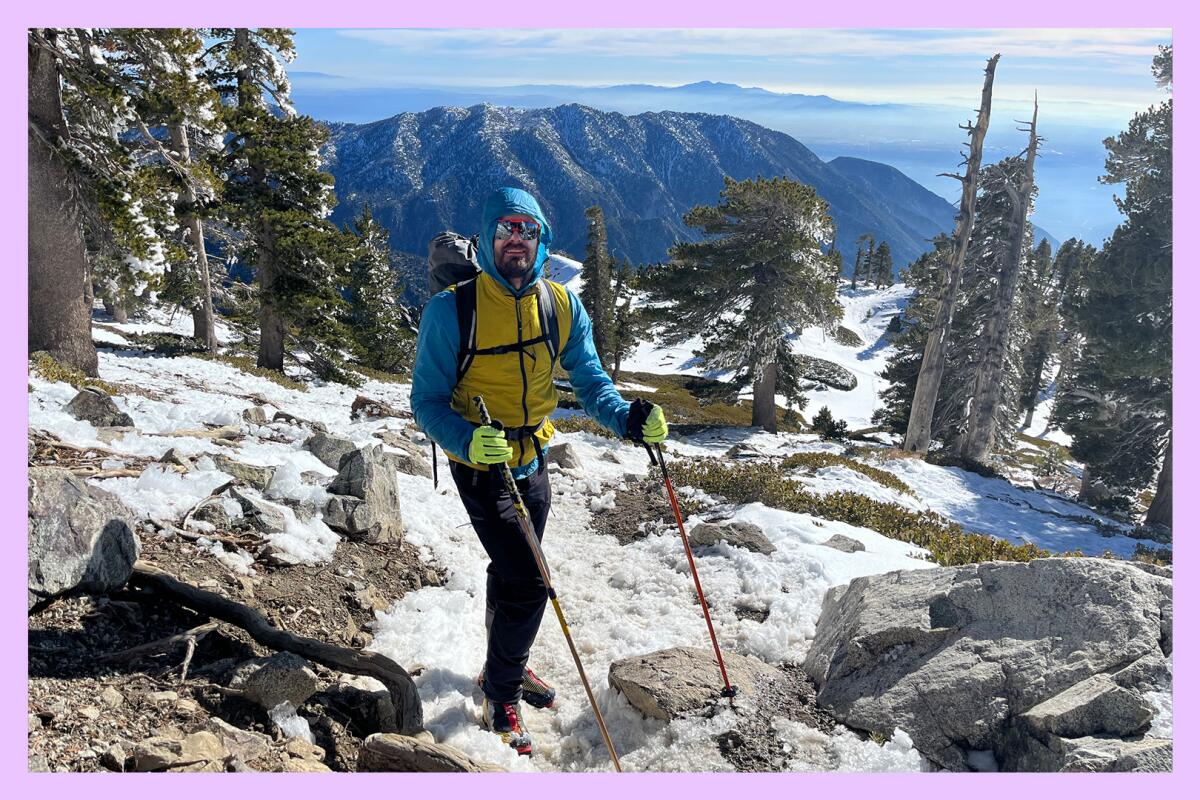
What you’ll need
- Winter mountaineering experience
- Mountaineering boots and crampons (a type of traction device that attaches to your boots)
- An ice ax and a helmet
- A compass and paper maps
- Extra food, water and clothing
- Clothing layers are key — it may feel steamy as you hike upward, but chill can set in the moment you take a break.
Do’s and don’ts
- Do brief someone who isn’t with you on your travel plans, including what route you’re taking and when you expect to return.
- Don’t hike alone. (Last month I highlighted empowering aspects of solo trekking, but it’s not safe on a mountain of this caliber.)
- Do expect rapid and severe weather changes at high elevations.
- Do be prepared to spend the night on the mountain if necessary.
- Do build in extra hiking time. Steepness, harsh weather and altitude can often slow you down.
- Do make sure you reserve enough energy to hike back down. It’s tempting to expend all you’ve got to reach the summit, but many accidents happen during the descent when you’re fatigued.
- Do turn around if you feel unsafe, excessively tired or the weather becomes severe. The mountain will be there when you want to return.
More recommendations at fs.usda.gov.
3 things to do
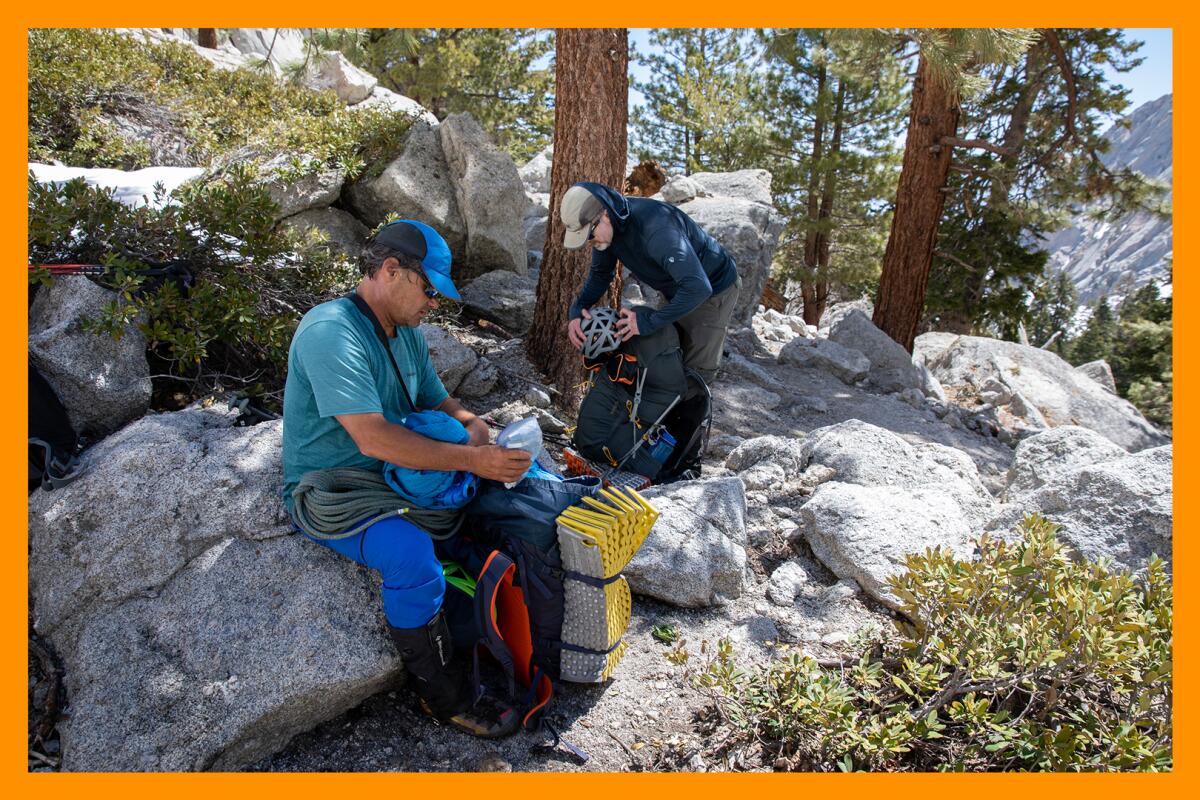
1. Take an outdoors safety course. Now that risk assessment is top of mind, why not learn new skills or sharpen existing ones to help make better decisions? The Sierra Club Angeles Chapter offers a comprehensive Wilderness Travel Course that teaches participants “how to be safe and comfortable” outside in all seasons. The unique-to-SoCal course includes outings focused on snow travel and snow camping, as well as instruction in trip planning, navigation, equipment use and backpacking.
Registration is still open for the Orange County and Long Beach-South Bay-based courses. The course costs $460 for Sierra Club members and $495 for non-members, in addition to required materials. For details, visit wildernesstravelcourse.org. Many mountain guiding services, such as Sierra Mountain Guides, offer targeted instruction in winter mountaineering.
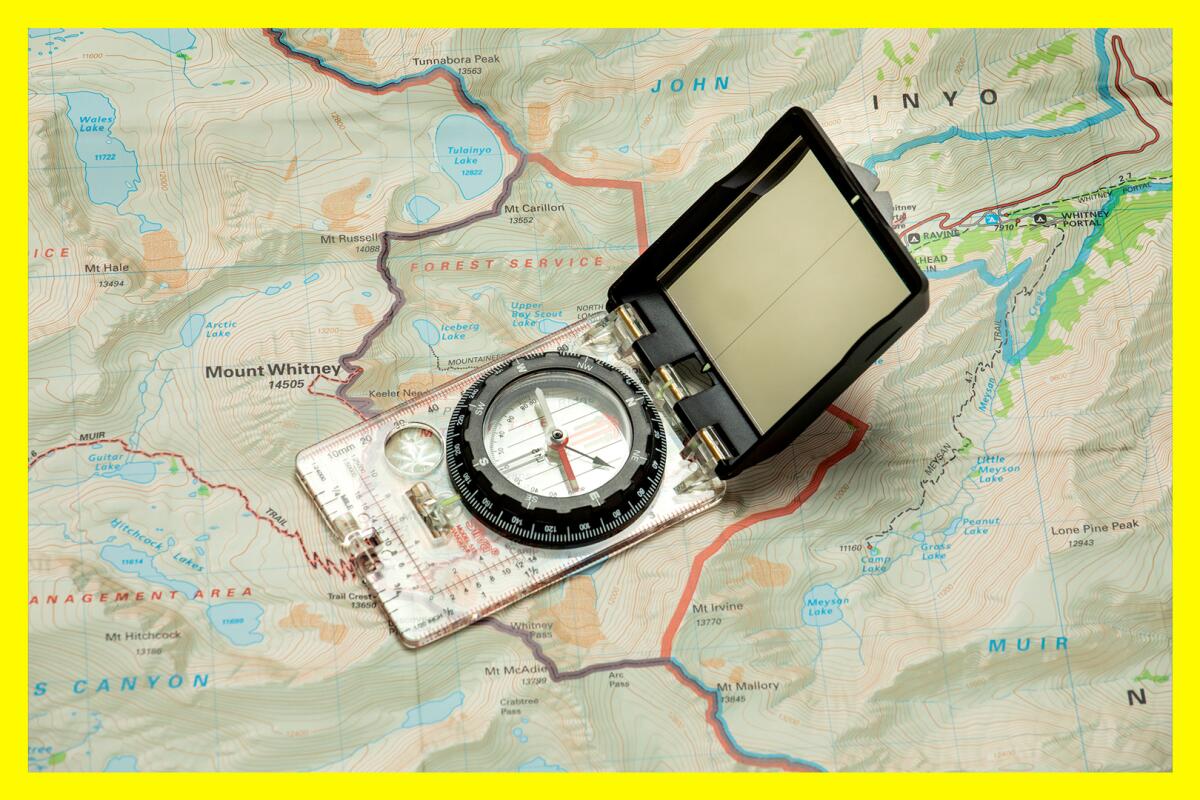
2. Stock up on the “10 Essentials.” This collection of survival items are widely considered key for successful backcountry hiking. Maybe you packed food and water, but what about a flashlight and first-aid supplies? According to the National Park Service, which provides the full list on its website, the essentials “can help you in the event of minor injuries, sudden weather changes, or unexpected delays.” (A YouTuber with the handle Tony Cheezin said the 10 Essentials played a major role in saving his life after he became “hopelessly lost” in the Baldy Bowl. “You seriously never know when the unthinkable can happen,” he says in a video posted six years ago. nps.gov
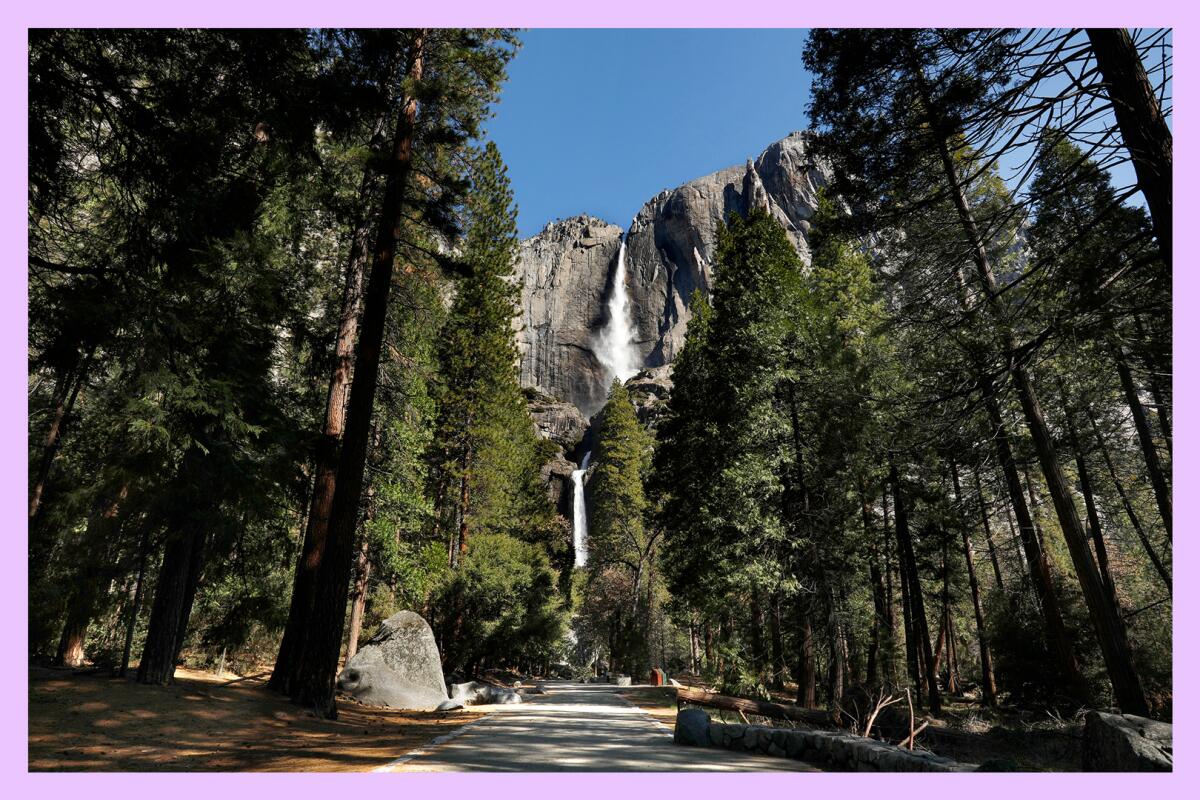
3. Book your summer trip to Yosemite — NOW. Last month, the National Park Service announced the rollout of new reservation requirements to visit the popular park during peak times. As my colleague Christopher Reynolds reports, the idea is to ease crowds that can overrun iconic attractions and choke traffic. If you’ve ever been among a sea of camera phones pointed at Yosemite Falls, you may be sighing in relief.
Between April 13 and June 30, visitors need reservations to enter between 5 a.m. and 4 p.m. on weekends and holidays, while from July 1 to Aug. 15 the requirement applies to day trippers on every day of the week. From Aug. 16 to Oct. 27, the requirement will return to weekends and holidays only. Reservations went on sale Jan. 5 so time is of the essence to snap up specific dates. Additional slots will be released a week in advance. More details and booking at reservation.gov.
The must-read
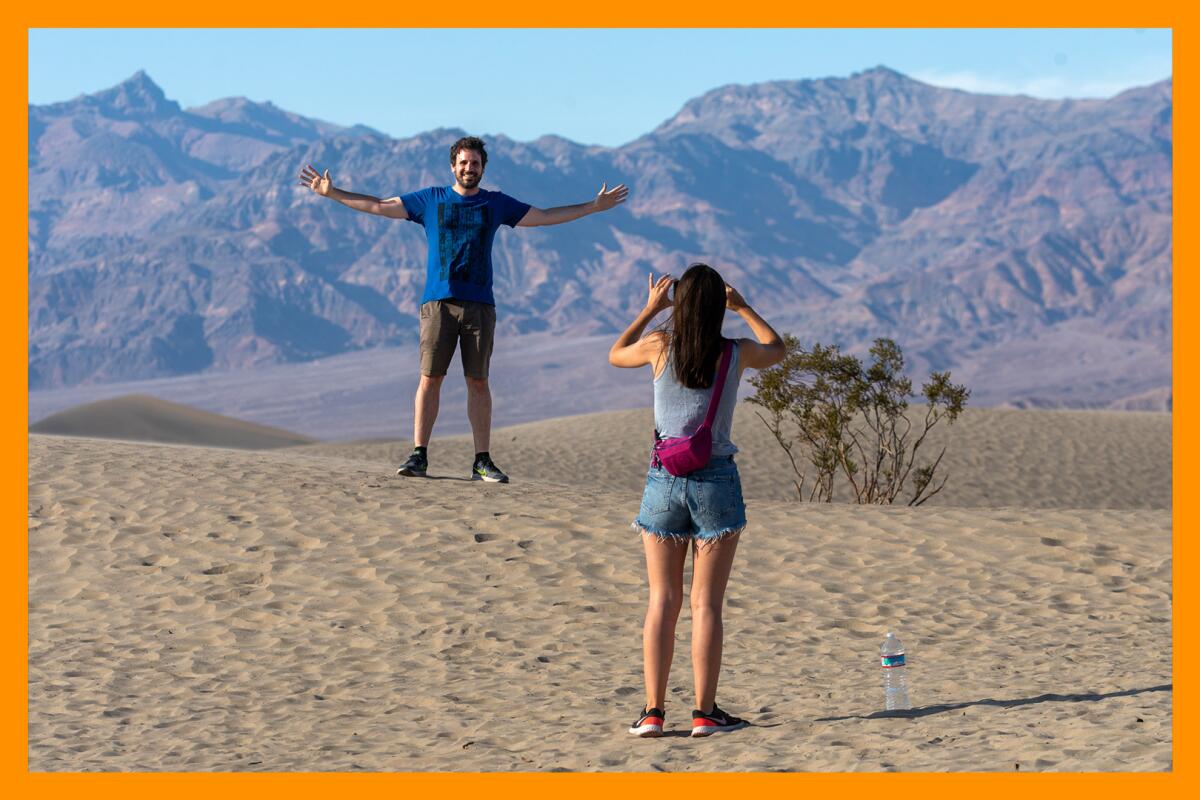
If you’re a fan of this newsletter, there’s a good chance that you’re thrilled by vast expanses of pristine wilderness and unique geological formations preserved by the country’s national parks. But not everyone is wowed by what these world-famous destinations have to offer — and they take to the internet to share their less-than-five-star reviews. Graham Averill, Outside magazine’s national parks columnist, scoured Yelp, TripAdvisor and Google to compile his favorite reviews of national parks from 2023.
Some are hilarious and others are downright bizarre, like the Yelp user who expressed “[a]bsolutely horrible disappointment” because Hawaii Volcanoes National Park lacked pickleball courts. California’s Yosemite and Death Valley national parks both earned critiques that made the list. I’m partial to a Yelp user’s review that described Death Valley as “boring, a ghost town really. I was charged 23 dollars a night just to be harassed by snake while walking around.”
Happy adventuring,

P.S.
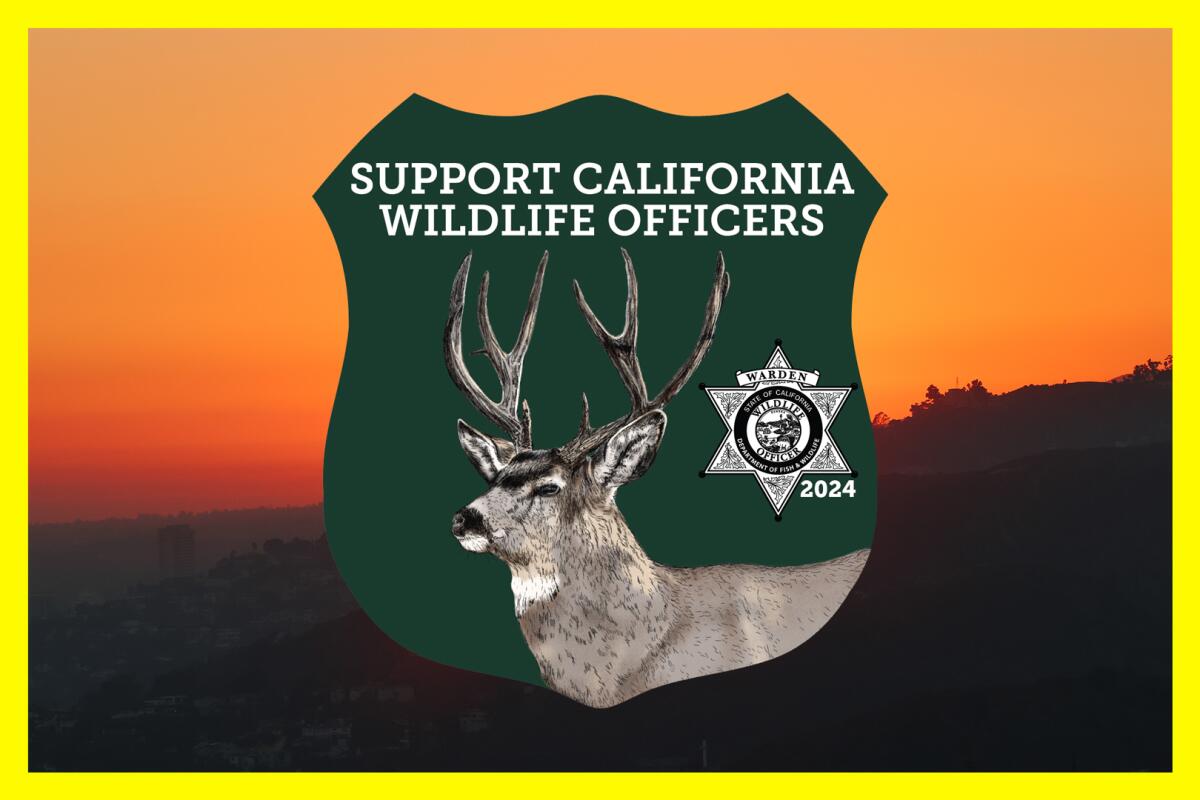
Are you interested in supporting California’s wildlife officers? The California Department of Fish and Wildlife recently released this year’s edition of a decal sold to provide its wardens with resources. For the past 13 years, state wildlife officials have released what are known as warden stamps, shield-shaped decals bearing the image of a Golden State species.
Previous stamp stars include the black bear, tule elk, sturgeon, spiny lobster and bald eagle. The 2024 version spotlights the ubiquitous mule deer, recognizable by its large, mule-like ears and black-tipped tail. Proceeds from the stamps (which sell for $5 each) are used to purchase equipment, protective gear and training for wildlife officers.
Nathaniel Arnold, acting chief of the department’s law enforcement division, said in a statement that species are selected “to represent California’s fish and wildlife populations and the people who support their conservation and management,” adding that the latest stamp “symbolizes the important role this species plays in California’s wilderness landscape and their longstanding popularity with hunting and non-hunting Californians.”
Additional details, including a link to purchase the decals, are at wildlife.ca.gov.
For more insider tips on Southern California’s beaches, trails and parks, check out past editions of the Wild. And to view this newsletter in your browser, click here.
Sign up for The Wild
We’ll help you find the best places to hike, bike and run, as well as the perfect silent spots for meditation and yoga.
You may occasionally receive promotional content from the Los Angeles Times.




